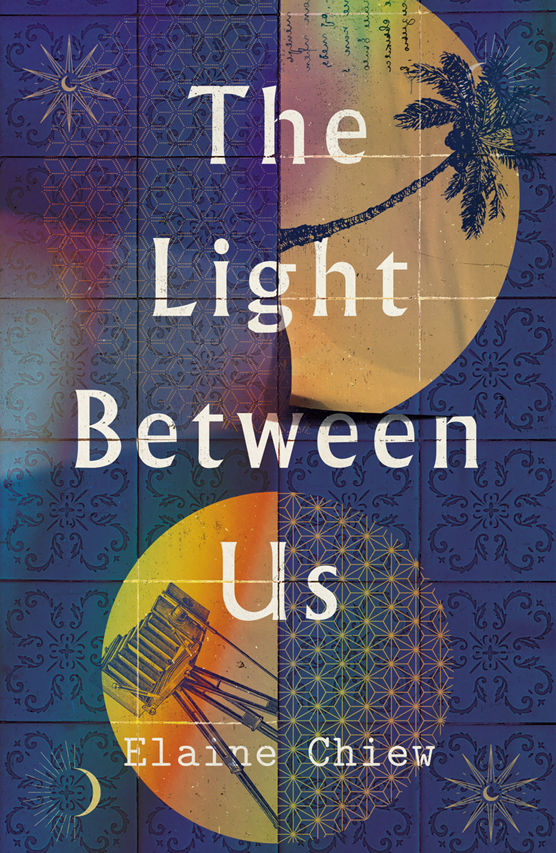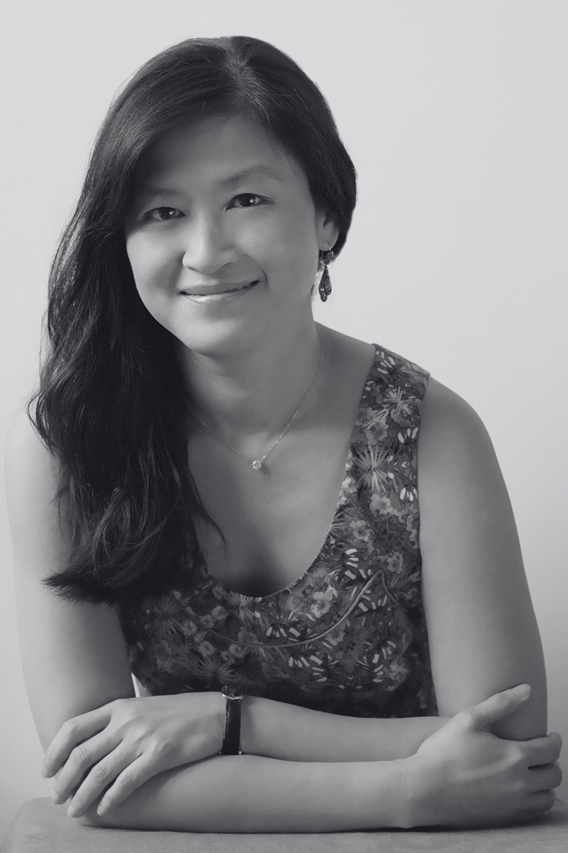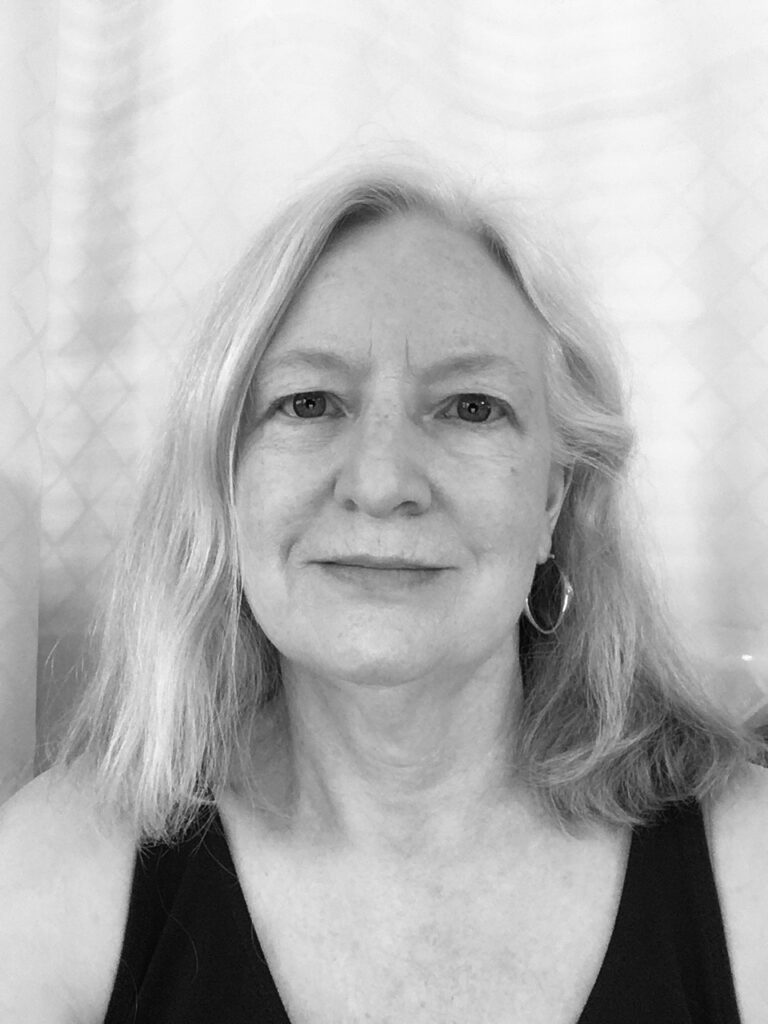By Charlotte Hamrick
The Light Between Us, published by Neem Tree Press,is a work of speculative fiction that explores Singapore’s turbulent past through a supernatural connection between Wang Tian Wei, a 1920’s photographer, and Charlie Sze-Toh, a 21st century archivist. The story intrigued me from the first page and took me on an adventure through time, space, and cultures with startling detail, an immersive storyline, and plenty of history, mystery, and mythology.

What was the initial spark for the storyline of The Light Between Us?
In 2021, in the thick of the pandemic, I was awarded an Early Historian grant by the Singapore Chinese Cultural Centre and LASALLE College of the Arts to look at early Singaporean photography and the images of women. I must have looked at photographs in the thousands from the National Archives Singapore, and as those gazes panned back at me, many whose identities are not lost to time, one thing was certain: the past is alive.
I knew then that the story had to feature an early period Chinese photographer. The Light Between Us is a time-travel epistolary star-crossed love story between an early Chinese photographer and a modern-day archivist, a hundred years apart. A quantum entanglement through the mode of photography allows them to write letters to each other.
Letters, to me, are one of the most intimate forms of address, almost like writing to oneself. It takes time to reach the addressee, nor can you know the effect it has had until a reply is sent back. Not so different in that a book too has this dissonance in time while creating this intimacy between writer and reader.
What are some of the questions you asked yourself when you began writing this book?
A few and they pretty much stayed throughout the process of writing the novel.
- How much history is too much history in fiction?
- What’s the best structure/genre for this story, and these protagonists? Dual timeline or straight-up historical fiction? Why quantum entanglement?
- Do I have the right to tell this slice of neglected history that has never been presented on a global stage before? What historical burden do I carry?
- What would be the most authentic way to tell this story while catering to a global audience and not lose them in the local?
What perspectives or beliefs do you think you’ve challenged with this book?
- The idea that feminism and female emancipation is a singular story, dominated by Western feminism.
- A nature of a decolonising narrative. Mine features voices and characters from the Southeast Asian region that have never had a chance to be center stage before, while paying tribute to historical factors and events in hopefully not binary fashion.
- World War II and the Japanese Occupation of Malaya and Singapore as stand-alone events in fiction. The lead-up to war was a period of political ferment with the rise of anti-imperialist consciousness, diasporic re-orientation, feminism, socialism, even Communism and these movements shed light on the devastation that a world war is.
What was the most challenging aspect of creating this book?
Probably the star-crossed love story. Even though I knew from personal experience that people have, and do, fall in love through letters – the written word has such a great effect on me as well and I have certainly fallen in love with books – how to write it in such a way that peeps accept that too is not a given. In the 1920s and 1930s in Southeast Asia (was popularly referred to as Nanyang then), middle class and upper-class women led very cloistered lives, and their marriages were arranged. If lucky, one was given a photograph to decide whether one would accept said spouse-to-be. For a woman living in contemporary times, a photograph alone might not be enough to evoke pangs of love, so the personal circumstances for Charlie, a modern-day archivist, had to place her in a peripheral position, solitary and lonely enough, that a supernatural event would have the effect of cleaving her life in two.
Tell us a little about your writing routine as you were working on the manuscript.
I am a slow writer. I had to have almost the entire trajectory and major plot points figured out before I could write a single word. So, the research, and an academic paper was borne out of this, was completed before I began to write. I wrote every day, and the momentum carried me along. I sent the first 5,000 words to the inaugural Cheshire Novel Prize and was gobsmacked when it got longlisted. I then had to submit the next 25,000 in a couple of months, so that deadline definitely lit a proverbial ‘fire under the tushy’. I finished the first draft in about five months, but the revision took ages.
It didn’t arrive in linear fashion either, so pieces of it moved around and were re-arranged. Also, because the letters that Tian Wei were receiving had to be spaced out in time along a prime number chronological order, I mapped that timeline meticulously several times to get the formula and tone right. At one point, I transposed their letters to each other onto a separate document to ensure that there was flow, there was intimacy, and that there was banter.
Talk about the relationship between history and imagination in your writing.
This is such a great question. In art history, curator-researcher June Yap coined the phrase “historiographical aesthetic”, basically addressing the production of history by exhibitions and artworks that excavate and re-narrate stories and histories from an archive. In a way, that’s what a photograph does – in itself, it tells you little, but the historian takes it as documentary truth. I was definitely influenced by this in my quest to understand that blurring between truth and fiction that the act of historicising a photograph inevitably is. Susan Sontag, quoted in the book, said, “Life is a movie. Death is a photograph.” It gave me pause. How remarkable it is that whenever we hold or view a photograph, past and future intersect; that moment in time is gone, and it is only our memory that continually refreshes the past and bleeds it into our present.
What are the challenges to writing from a historical perspective?
A common trap for a historian is that they fall in love with their subject. I was not immune. I even found myself wondering once or twice if I created Charlie just to be able to give voice to my obsession with photography and the era.
This led to the inevitable problem of bloat. Having put all that wonderful history in (and some of those facts will spin you around for days!), the narrative becomes unreadable. After all, it’s not meant to be a history book, is it? Then comes the problem of stripping out all that bloat because the story can’t breathe. The third problem is putting some of it back in, but which part, without ruining this delicate balance that has to be struck between story and (his)tory?
Some writers I know believe that there is a hard and fast rule: anything that does not serve the story has to go. I’m no longer so sure I agree. The books that have stayed with me a long, long time are those who educate me even as they entertain. I wonder if each writer dealing with the weight and burden of historicity has to learn to strike that balance for themselves. Of course, agents and publishers and editors weigh in, too. Understand that a book, once it enters a pipeline to an audience, becomes a joint project.
What are some of the historical documents or oral stories used for this writing?
All the historical photographs the novel refers to are real and form part of the Lee Brothers Studio Collection within the National Archives Singapore. The nature of a Chinese studio and the work of a photographer from that era have hewed very closely to historical evidence, and I used the Oral Histories Singapore Archives for their recordings of early photographers. I also read up massively on Chinese reading clubs and social clubs of that era, the history of Kuomintang and Communist activities, British colonial policy, as well as the personal histories and accounts of Straits Chinese elites, like Dr Lim Boon Keng and Sir Song Ong Siang, from the era.
The supernatural, myth, and time travel are strong themes in your book. Are these elements that inspire your writing in general or are they specific to this work and why?
When I did my Asian art history degree, theoretical notions of the collapse of time and space in the Anthropocene infiltrated and changed my thinking. Also, having grown up in Malaysia, notions of the supernatural – ghosts etc. – are alleled within our storytelling gene. But the process of forming one’s own thematic concerns and aesthetic, particularly having come-of-age on a diet of exclusively the Western canon, takes years. Thus, I think the jury is still out on whether the supernatural, mythology (particularly Asian mythology), and time as a construct (not so much time travel) will continue to haunt me – though I suspect – if my current WIP is any gauge – they will.
Food is also a strong element which I thought was delightful. Your descriptions of the camaraderie or conflict between characters while dining together added another layer to the story. I’m curious how you arrived at the choices you made for the dishes served.
The food at the dinner referenced the Peranakan and Cantonese heritages within Charlie’s family. I only wish I have the space and time to delve into the cultural anthropological histories of these different dishes. One of the more delightful rabbit holes I dove down was the curry chee cheong fun. When I read up on chee cheong fun – these rolled up thick-slab rice noodles usually with some kind of filling (very popular as a dim sum dish) – I was pleasantly surprised to discover it had been sold by hawkers and peddlers in the 1920s. So at what point did it evolve into curry chee cheong fun? At what point did they add pigskin? I consulted Lai Chee Kien, a Singaporean food writer and culinary historian of sorts, and although we couldn’t determine a date, it was safe to say it did not exist in the 1920s. And so that was what made it into Charlie’s letter to Tian Wei.
If you were to write a spin-off about a side character, which would you pick and why?
Probably the quantum entanglement if that can be a character in its own right.
A prequel of how it might have begun. A Chinese temple painter maybe. At that time, Chinese temple painters were all male, but she was a girl who wanted to join this cadre.
Who are your biggest writing influences?
There are so many I don’t even know where to begin. As I get older, I no longer lionize writers the way I used to. But these writers undeniably have influenced me: Toni Morrison, E L Doctorow, Anthony Doerr, Anita Desai, David Mitchell, Maaza Mengiste, Ted Chiang, Peter Ho Davies, Anthony Burgess, Arundhati Roy, Junot Diaz, John Steinbeck, Siri Husvedt, Alex Chee, Mario Vargas Llosa, Italo Calvino, and many, many fantabulous short story writers (it’s how I started writing after all): Lorrie Moore, Petina Gappah, Mary Gaitskill, Mary Yukari Waters, Lauren Groff, Edwidge Danticat, Kelly Link, Zen Cho, Carmen Maria Machado, Lesley Arimah Nelson, Claire Keegan, Kevin Barry, Deesha Philyaw, Saras Manickam, Victor Fernando Ocampo…I better stop or this list is never going to end.
What I recognize now is that every book I have loved reading has watered and nourished me. As poet Ada Limón said, “I write with all the good ghosts in my corner.” My tribute thus goes to writers whose works I not only hugely admire, but who have generously supported me in numerous ways – Asako Serizawa, Yvonne Adhiambo Owuor, Irenosen Okojie, Anton Hur, Charmaine Wilkerson, Sequoia Nagamatsu, Hannah Vincent, Mahita Vas, Melissa Fu, Wiz Wharton, Dipika Mukherjee, Jing-Jing Lee, Alka Joshi and Jemimah James Wei. I hope you will join me in supporting them too by buying and reading their books.
What is the most valuable piece of advice you’ve been given about writing?
If you’re not the kind of writer who writes every day, don’t beat yourself up about it. But do visit your work every day. I call it visiting my ‘ailing relative’ because they need care and mindfulness and attention so that they can heal and grow.

Elaine Chiew
Elaine Chiew is the author of The Light Between Us, The Heartsick Diaspora (recommended in the Guardian, The Singapore Straits Times, BookRiot, and Esquire SG) and compiler/editor of Cooked Up: Food Fiction From Around the World.
Her stories have won prizes, notably twice in the Bridport International Short Story Prize, and been anthologized in the U.S., UK and Asia, including with BBC Radio 4 and in The Best Asian Short Stories 2021.
She mentors, teaches creative writing ad hoc, writes freelance and has worked as an independent researcher in the visual arts. She has an M.A. in Asian Art History from Goldsmiths London. In a former career, she was a U.S. trained attorney with a degree from Stanford and worked in New York, London, and Hong Kong. The Light Between Us is her first novel and has been longlisted for the inaugural Cheshire Novel Prize.
You can find more information on www.epchiew.com and find her on Twitter @ChiewElaine, FB @epchiew.921 and IG @ authorepchiew.

Charlotte Hamrick
Charlotte Hamrick’s creative writing and photography has been published in a number of literary journals and anthologies including Still: The Journal, The Citron Review, Atticus Review, Reckon Review, Trampset, and New World Writing, among many others. Her fiction was selected for the Best Small Fictions 2022 and 2023 anthologies and she’s had several literary nominations including the Pushcart Prize, Best of the Net, Best Small Fictions, and Best Microfiction. She was formerly Creative Nonfiction Editor for The Citron Review and Barren Magazine. She also writes intermittently on her Substack, The Hidden Hour. She lives in New Orleans with her husband and a menagerie of rescued pets where she sometimes does things other than read and write.
